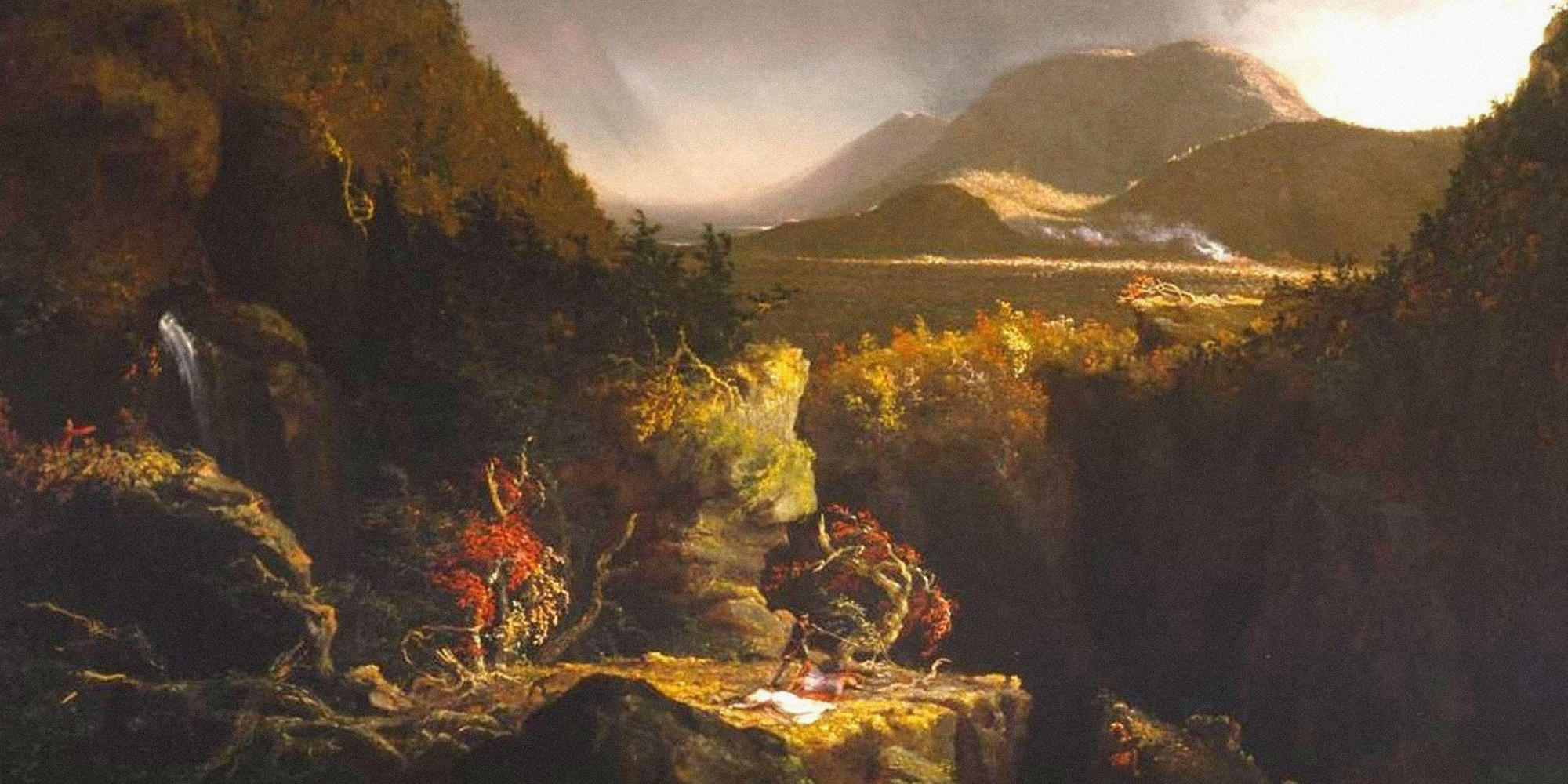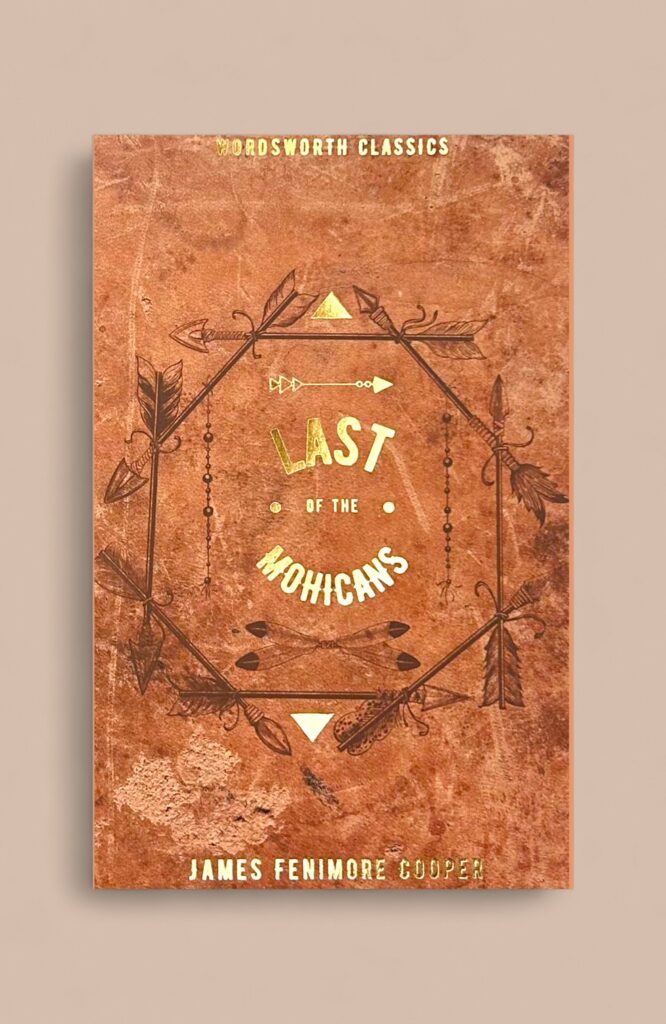
The Last of the Mohicans
David Stuart Davies looks at a classic tale of American history. ‘The Last of the Mohicans’.
American author James Fenimore Cooper (1789 – 1851) penned five novels about frontier life across north-eastern America in the eighteenth century. Each novel features the rather oddly named character Natty Bumppo, a frontier scout known to European-American settlers as ‘Leatherstocking’ because of his buckskin clothing. The most famous and popular of these novels is The Last of the Mohicans (1826) in which Bumppo is referred to as Hawkeye. Natty Bumppo was the child of white parents but he was raised by the Delaware Indians inheriting their tracking and hunting skills. He grew up to be a fearless warrior proficient in the use of many weapons, chiefly the long rifle. In this novel he is partnered with his Mohican foster brother Chingachgook.
Cooper set this story during the Seven Years’ War, an international conflict between Great Britain and France known by the Anglo-American colonists as the French and Indian War. The conflict involved British colonial settlers and minimal military forces fighting against the French with both sides also relying on Native Americans to support them in their struggles, each side determined to call the land theirs. It was a time when the American Indians were slowly disappearing as a race either because they were dying out or were being assimilated into the mainstream white population.
The plot allows Cooper to underline the dark irony of two European nations fighting for the conquest of a foreign land, to colonise it, and in the process utilising the American natives in order to conquer their own territory. We view this tangled situation mainly through the eyes of the central character, Hawkeye who, while having allegiance to both the white men and the Indians, remains an independent heroic figure. As critic David Blair observes: ‘Hawkeye’s moral code is dictated neither by white nor by native notions of honour and self-interest – and through him Cooper raises lasting questions about the practices of the American frontier and the eclipse of the indigenous cultures.’
However, while the political and moralistic issues raised by the novel still have relevance today, the continuing appeal of this novel lies in its thrilling narrative with its exciting episodes, skirmishes, battles scenes and acts of treachery. Through the layers of conflict Cooper creates a dramatic and nail-biting scenario in which Cora and Alice Munro, daughters of a British commander on the front line of the colonial war, attempt to join their father. On their journey, the sisters are abducted by hostile indians, due to the treachery of the renegade brave Magua. However they find help in the person of Hawkeye, along with his companions, Chingachgook and his son Uncas, the last of his tribe. The novel climaxes with an exciting chase as Hawkeye pursues the villain Magua up to a high mountain where a ferocious fight takes place on the edge of a cliff.
The Last of the Mohicans remains James Fenimore Cooper’s most popular work with its examination of this unhappy period of America’s history combined with a rattling boy’s own saga of cowboys and indians. It has continued to be one of the most widely read novels throughout the world, and has influenced popular opinion regarding the frontier period of eastern American history. The romanticised images of the strong, fearless and resourceful frontiersman epitomised by Hawkeye as well as his companion the stoic, wise, and noble ‘red man’ Chingachgook were notions derived from Cooper’s characterizations. The phrase, ‘the last of the Mohicans’, has come to represent the sole survivor of a noble race or type.
The book was well received when it was first published and over time has come to be regarded by some as the first Great American Novel. However, not all viewed the book in this light. Mark Twain, for instance, criticised the narrative for being ‘overwritten’ claiming that Cooper used far more words than necessary in creating his narrative.
Re-reading the novel in his later years, Cooper noted that there were some inconsistencies of plot and characterization; but, he wrote that in general, ‘the book must needs have some interest for the reader, since it could amuse even the writer, who had in a great measure forgotten the details of his own work.’
As with all great novels that encompass iconic characters and dramatic action, The Last of the Mohicans has been the subject of many cinematic versions. The earliest was in 1920 which presented Magua as the main character and starred Wallace Beery. The film was well received at the time of its release and in 1995 it was deemed ‘culturally significant’ by the Library of Congress and selected for preservation in the United States National Film Registry.
The 1936 feature film based on the novel starred Randolph Scott as Hawkeye. Screenwriter Phillip Dunne who worked on the first draft of the script before he was replaced by another writer regarded the resulting movie as a travesty. He observed that, ‘they had succeeded in turning our authentic eighteenth-century period piece into a third-rate Western. The characters even spoke to each other in twentieth-century colloquialisms, and each had been rendered banal beyond belief’.
Nevertheless, this movie was the basis for a subsequent 1992 adaptation written and directed by Michael Mann and starring Daniel Day-Lewis as Hawkeye, who was presented as a romantic lead who develops a relationship with Cora. One American reviewer thought the film was ‘more of a matinee fantasy than it wants to admit — but it is probably more entertaining as a result.’
There was also a cheap and cheerful television series in the 1950s starring John Hart as Hawkeye and fading horror star Lon Chaney Jnr as Chingachgook. The only elements taken from the book for this series was the background period and the close relationship between the frontiersman and his Indian buddy.
All the dramatised versions of The Last of the Mohicans tend to focus on the romanticism of the story to the exclusion of other elements, thus losing the richer picture of historic events as presented in Fennimore’s novel.
Publisher’s note: The question we had to address in this article was the appropriate term to be used when referring to the indigenous tribes of the United States. The term ‘Native American’ became the accepted parlance in the 1970s but was widely rejected by many of the people to which it was applied, who preferred to reclaim the terms American Indian or simply Indian. On the basis that this is a question to which there is no right answer, we have used all of these terms liberally throughout this article, and as a result probably offended everyone in the process. Sorry.
Image: Thomas Cole: Scene from Last of the Mohicans Credit: Artepics / Alamy Stock Photo
Books associated with this article
